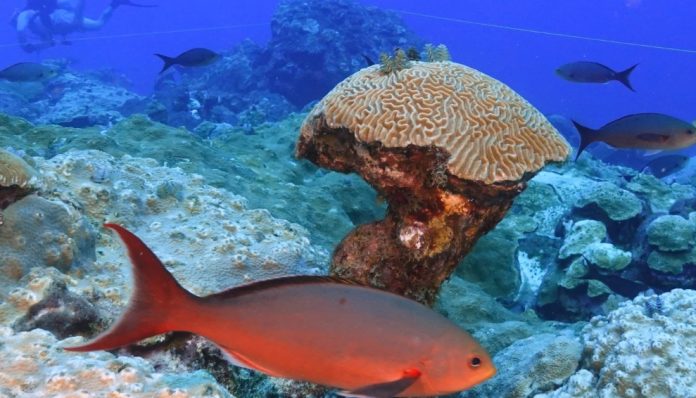Global coral bleaching has affected 84% of the world’s ocean reefs, becoming the largest such event in recorded history, the International Coral Reef Initiative (ICRI) said on Wednesday.
This is the fourth global bleaching event since 1998 and has surpassed the 2014-2017 crisis, when about two-thirds of reefs were affected, specified ICRI, which brings together more than 100 governments, non-governmental organisations and other entities. The current crisis, which began in 2023 due to warming oceans, is ongoing – with no end in sight.
“We may never again see the heat stress that causes discolouration fall below the threshold that triggers a global event. We are witnessing a phenomenon that is completely changing the face of our planet and the ability of the oceans to support life and livelihoods,” said Mark Eakin, executive secretary of the International Coral Reef Society and former coral monitoring programme manager at the US National Oceanic and Atmospheric Administration (NOAA).
Last year was the hottest on record, and much of that heat was absorbed by the oceans. The average annual sea surface temperature outside the polar regions reached a record 20.87 °C.
This is devastating for corals, which play a key role in seafood production, tourism and protecting coastlines from erosion and storms. Coral reefs are sometimes called “marine rainforests” because they support high levels of biodiversity – about 25% of all marine species can be found in, on and around coral reefs.
The bright colours of corals are due to the symbiotic algae that live inside them and serve as their food. Prolonged warming causes the algae to release toxic compounds and the corals reject them. All that is left is a white skeleton, and the weakened corals are highly likely to die.
The bleaching is so extensive that NOAA’s Coral Reef Watch program has had to expand its scale of alert levels to account for the increasing risk of coral death.
Scientists are trying to conserve and restore corals. For example, one Dutch lab is collecting coral fragments off the coast of the Seychelles to propagate them in a zoo and repopulate them back into the ocean; others are rescuing corals damaged by heat waves, nursing them back to health and returning them to the ocean.
None of this, however, can play a decisive role in saving corals. “The best way to protect coral reefs is to address the root cause of climate change. And that means reducing anthropogenic emissions, which mostly come from burning fossil fuels….. everything else is more of a band-aid than a solution,” Eakin believes.
“It is time for people to realise what they are doing …. inaction will be the kiss of death for coral reefs,” added Melanie McField, co-chair of the Caribbean Coordinating Committee of the Global Coral Reef Monitoring Network.
